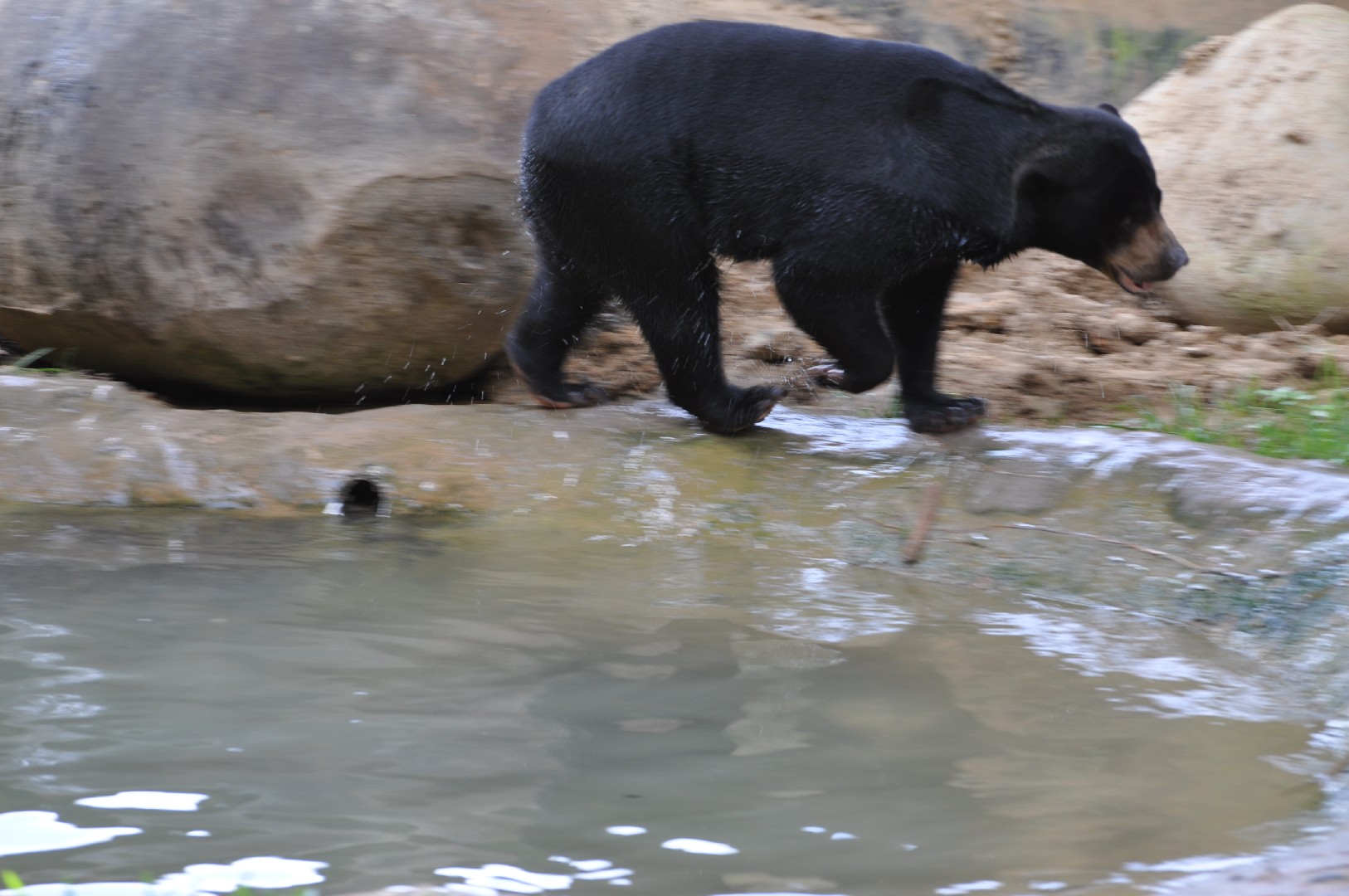Sun bear
A species of Sun bear, Also known as Mainland sun bear, Malaysian bear Scientific name : Helarctos malayanus Genus : Sun bear
Sun bear, A species of Sun bear
Also known as:
Mainland sun bear, Malaysian bear
Scientific name: Helarctos malayanus
Genus: Sun bear
Content
Description General Info
 Photo By shankar s. , used under CC-BY-2.0 /Cropped and compressed from original
Photo By shankar s. , used under CC-BY-2.0 /Cropped and compressed from original Description
Malaysian bears have a short-haired, black fur that has a whitish or yellowish, crescent-shaped spot on the chest. The short snout has a fairly light, yellowish or orange color, which often extends beyond the eyes. This type is characterized by the long tongue, the small and round ears, the large, curved and pointed claws and the bare soles of the paws, which are adaptations to the climbing lifestyle. An adult animal reaches a body length of around 100 to 140 centimeters and a shoulder height of 70 centimeters, the tail is a 3 to 7 centimeters long stub. The weight varies between 27 and 65 kilograms, with the males becoming significantly heavier than the females.
General Info
Lifespan
20-30 years
Diet
Sun bear is predominantly omnivorous, feeding mostly on small mammals, fruits, and insects. This species exhibits a significant preference for honey, with bee colonies and their hives forming a crucial part of its diet.
Appearance
Sun bear is a small bear, with a compact and muscular body covered in smooth, glossy fur. It exhibits a unique coloration, primarily dark brown or black, with a vibrant white or orange 'V' stretching from the chest to the face. Unlike other bears, it has large, well-developed forearms, indicating its climbing skills. There are no significant physical differences due to age or gender, apart from the size where males tend to be slightly larger.
Behavior
Sun bear is an arboreal and solitary species, spending time mainly in trees. Active mainly at night, it forages for food like fruit, leaves, and small fauna. Social interaction is generally confined to maternal care, while mature individuals are territorial. Unique behaviors include vocalization and scent-marking to communicate territory boundaries.
Population
Decreasing